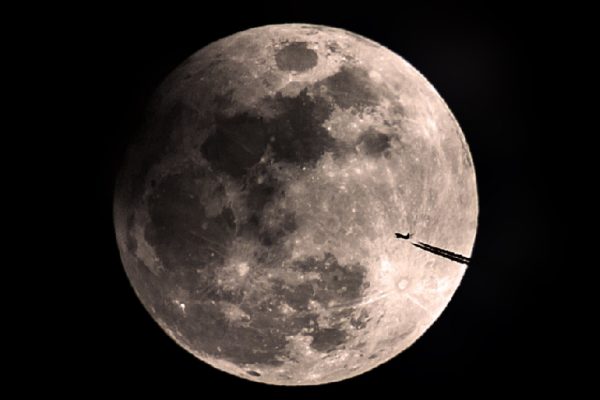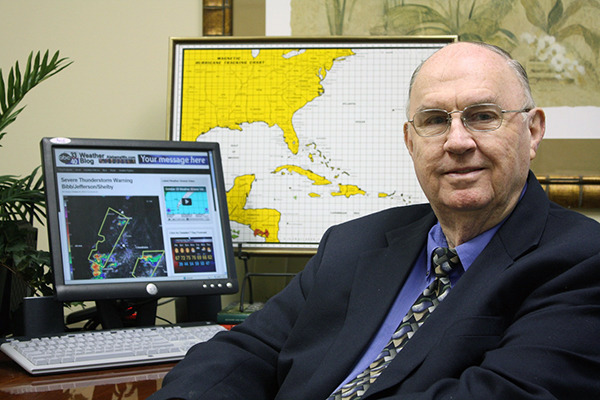Who’s Your Astronomer?
NASA JPL Solar System Ambassador and WeatherBrains Contributor Tony Rice will be sharing his weekly astronomy column with us here on Alabama. It will start regularly appearing next Tuesday, February 21st.
Welcome Tony to the team! His Twitter account is @RTPHokie!
Don’t get me wrong, I’m of course all for getting people outside and enjoying the night sky. Especially when rare events come up on the calendar.

Tom Bailey took this breathtaking photo of the lunar eclipse Friday evening and shared it on SpaceWeather.com. He even captured a jet flying through the view!
However, last week’s coverage leading up to a couple of celestial events got a little out of hand, setting up a lot of people for disappointment.
The full moon, a lunar eclipse, a comet, and more “put on a show” in the night sky. Problem is, only one of those events was readily visible with the naked eye. Which is how nearly all of their audience experiences events like this.
Some news agencies did a marvelous job pulling in quotes from experts who tempered exceptions while sharing a bit of science and excitement about the coolness of it all. Others oversold the events setting people up for disappointment.
Some gushed about the green comet 45/P. while yes, the dim comet does appear green, that’s only when viewed through a good pair of binoculars or telescope. The photos of the brilliant green fuzzy comet with a long blue-purple tail hat accompanied some of these stories are just those, photos. Multiple long exposure photos which are stacked in software.
Many stories also urged readers to experience Friday night’s lunar eclipse. Problem was, this was a penumbral eclipse. The moon passed through the brighter part of the Earth’s shadow, the penumbra. While there was some visible darkening, it was very subtle and probably not noticeable in less than clear skies. Some news sources did a good job describing what to expect, some did not.
Even more frustrating, were the stories that marveled at the lunar eclipse occurring on the same day as a full moon. Stop, think about it for a moment. Where are the Sun, Earth and Moon in relationship to each other as the moon passes through Earth’s shadow cast by the Sun? A lunar eclipse of any kind can only occur during a full moon.
In most school systems relative position of the Sun Earth and Moon, lunar phases and eclipses are covered by 6th grade.
There were enough headlines that at least implied this was a rare occurrence to inspire an entry on the snopes.com website.
Some stories included spotting Uranus. While technically this can be spotted with the naked eye, conditions have to be close to perfect. That means clear sky free of light pollution, The night of a full moon is pretty much the worst time to attempt this ocular feat.
I will be here to help set your expectations and keep you informed with all kinds of Spacey Stuff, right here on AlabamaWX.com.
For more spacey stuff, follow me at @RTPHokie.
Category: Hodgepodge, Spacey Stuff
















